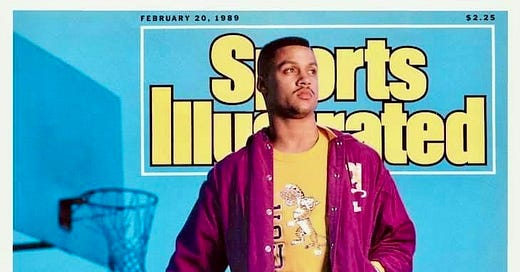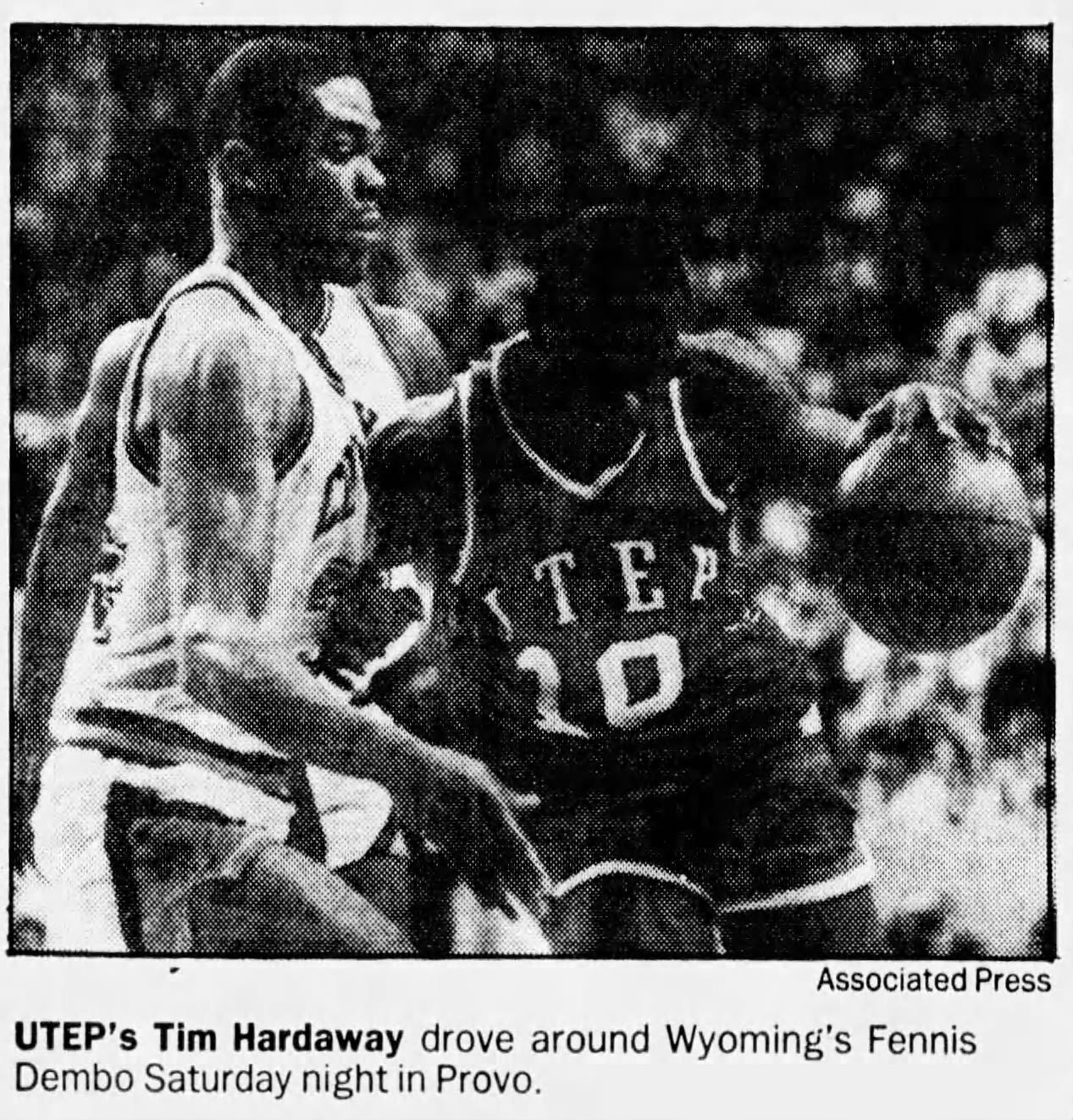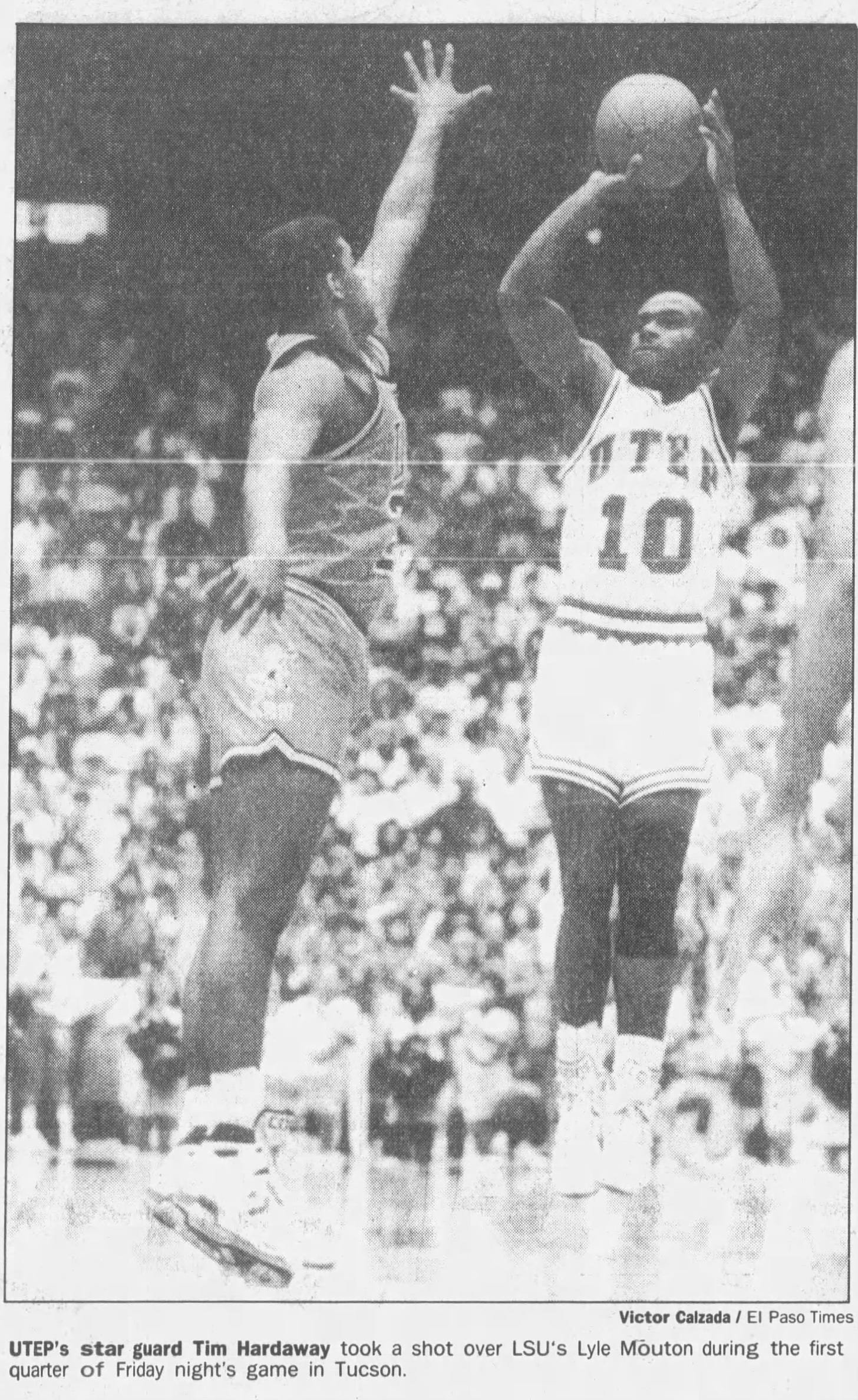Pete Maravich’s otherworldly career at LSU gained renewed attention the last two seasons with the pursuits of Detroit Mercy’s Antoine Davis — which fell short — and Iowa’s Caitlin Clark, which appears likely to culminate in the coming days. Craig Meyer’s The Front Porch offers an illuminating breakdown of Maravich’s time as a Tiger and the rarefied air around The Pistol.
Meyer’s piece offers background that should explain more thoroughly than I could hope the significance of being compared to Maravich in any context.
And no one has ever been paralleled with Pistol quite as forcefully as Mahmoud Abdul-Rauf.
Named Chris Jackson before his conversion to Islam, Abdul-Rauf appeared on the cover of Sports Illustrated — when doing so was the apex of sports-media exposure — alongside the heading “HE’S A PISTOL.”
That Abdul-Rauf was only a freshman, and that he played for the same LSU program as Maravich only added that much more gravity to the comparison.
But while it’s understandable to see this cover 35 years later and chalk it up to sensationalism meant to sell magazines — this was the same era in which SI promoted Plymouth State’s Joe Dudek as “The Thinking Fan’s Heisman,” after all — consider that in just his fifth-ever game with the Bayou Bengals, Abdul-Rauf scored 53 points.
He dropped that half-C note plus three against that season’s SEC regular-season champion Florida, no less.
For his 1988-89 freshman season, Abdul-Rauf averaged 30 points, 4.1 assists, 3.4 rebounds and 1.7 steals per game. Yeah, it’s not the 43.8 points per game Maravich averaged in 1967-68 as a sophomore, when the NCAA didn’t allow freshmen to play with the varsity, but Abdul-Rauf’s freshman campaign might be the most impressive for any frosh ever.
What’s more, Abdul-Rauf had an opportunity in 1989 Maravich never did. With the expansion of the NCAA Tournament to include at-large bids in 1975, LSU landed in the field of 64 despite finishing fourth in the SEC and suffering an early exit from the conference tournament.
Few head coaches seemingly mastered the frenetic, anything-can-happen nature of the expanded NCAA Tournament in its infancy quite like LSU’s Dale Brown. In 1986, his Tigers eeked into the Dance as a No. 11 seed and advanced to the Final Four — a feat not to be duplicated by any other 11-seed again until George Mason 20 years later.
A year later, a 10th-seeded LSU team came one point away from returning to the Final Four and playing an ostensible home game in the Superdome.
The 1989 Tigers landed in the Tournament as a No. 10 seed once again. With one of the most explosive scoring guards in the game and Brown’s track record in March — which also included a 1981 Final Four run as a No. 1 seed — LSU could reasonably be considered a threat to go deep once again.
The road to Seattle began against a national championship-winning program in the last days of its golden years.
***
Maravich debuted with the LSU varsity in 1967, two seasons after Texas Western claimed one of the most historically significant national championships in college basketball history.
The Miners returned to the NCAA Tournament just once in the three seasons when Maravich was lighting up the nation, though that was one more appearance than LSU made in the same timeframe.
Texas Western never again reached the heights of its 1966 national championship, and its next period of sustained success came in the latter half of the ‘80s. By that time, Texas Western was UTEP, but Don Haskins was still the Miners head coach.
Haskins guided UTEP seven straight seasons from 1984 through 1990, and to a Sweet 16 in 1992. The ‘92 squad fell just a possession shy of outlasting Cincinnati for a trip to the program’s first Elite Eight since the Glory Road team of ‘66.
This period is also noteworthy for including one of the two best individual careers in UTEP history.
Tim Hardaway had a much more modest start to his college career than Abdul-Rauf. No one was drawing any parallels between Hardaway and arguably the greatest guard in college basketball history, nor comparing him to the best player in program history.
At UTEP, that was Nate “Tiny” Archibald, a nickname that became synonymous with him in a Hall of Fame NBA career. In his time at UTEP, however, the local newspaper deemed him “Nate The Skate,” and quoted Haskins as calling him the program’s best-ever guard.
Archibald played at UTEP the same three seasons Maravich was at LSU. His statistics were a far cry from matching Maravich’s — but really, whose weren’t? Nate The Skate was pretty damn good in his own right, averaging 15.8 points per game in 1967-68; 22.4 in 1968-69; and 21.4 for the Tournament-qualifying ‘70 team.
Hardaway, meanwhile, debuted averaging a modest 4.1 points and 1.9 assists per game playing entirely off the bench for the Miners in 1985-86.
An ankle injury sustained in early December 1985, at a juncture when the Hall of Famer Haskins told the El Paso Times “Tim was really coming along,” may have hindered Hardaway’s freshman contributions.
As a sophomore, Hardaway moved into the starting lineup and was good — 10 points and 4.8 assists per game — though nothing that screams future Hall of Famer.
Ditto 1987-88 when Hardaway averaged 13.6 points and 5.7 assists per game. Before the Miners headed into the 1988 NCAA Tournament, they lost a 79-75 Western Athletic Conference Championship Game decision to Wyoming and Fennis Dembo.
If anyone had taken odds in March 1988 on a player from that game going onto the heights of success and stature Hardaway reached, it would have been Dembo.
In the 1988-89 season, however, Hardaway’s star rose. He scored 22 points per game while shooting better than 50 percent from the floor, dished 5.4 assists per game, and made almost three steals a game.
Hardaway won WAC Player of the Year and cultivated a reputation out West for both his sensational play, and as a prolific trash talker. Wyoming’s Reggie Fox told reporters in March of that year “Hardaway loves to talk.”
Anything Hardaway might have said to Abdul-Rauf over the course of their clash in the 1st Round of the 1989 NCAA Tournament pales in comparison to the statement Hardaway made to the national TV audience — or to the NBA executives considering the 6-foot point guard for the following summer’s draft.
“The important thing is to win,” Hardaway said at the press conference ahead of seventh-seeded UTEP’s clash with LSU. “I know there’ll be scouts out there, but I’m not playing for them.”
Perhaps not, but he made an impression on them all the same.
***
The distance between El Paso and Tucson isn’t exactly so close as Phoenix to Tucson, or El Paso to Las Cruces. The drive from El Paso to the Old Pueblo is four hours, about the same as Baton Rouge to Houston.
Maybe it’s the vastness of the American West, however, but El Paso feels much closer to Tucson than that.
I witnessed it firsthand in the first-ever NCAA Tournament I covered. As a student writing for the University of Arizona’s Daily Wildcat, I worked the Tucson Regional in 2005 that included a matchup between UTEP and Utah.
McKale Center became a veritable Haskins Center West, with a sea of orange filling Arizona’s on-campus venue.
The El Paso Times describes a somewhat similar scene, as “[t]he Miners, perhaps inspired by the 1,700 noisy fans from El Paso in Tucson” gave a spirited performance.
A boisterous crowd and team speed combined to blitz LSU, with UTEP building an early 19-point lead. The Miners took a 42-29 advantage into halftime, and held off LSU rally efforts in the second half.
Hardaway and Abdul-Rauf were their teams’ respective stars, naturally: Abdul-Rauf scored 33 points, grabbed five rebounds and swiped two steals. Hardaway went for 31 points, knocked down three 3-pointers, dished nine assists and made three steals.
Hardaway was spectacular throughout the 1988-89 season, but this was a true star-making performance in retrospect, launching him onto the national stage ahead of a long and influential NBA career.
There’s something poetic in that regard in Hardaway being officially introduced as a Hall of Famer in New Orleans, right in LSU’s backyard.
Abdul-Rauf returned to LSU for one more season and averaged 27.8 points per game. His college career ended in the Round of 32 when another standout guard — this time, Dennis Scott — dropped 30 points for Georgia Tech.
Remarkably, none of the three biggest stars in LSU basketball history over the last 60 years advanced further than the 2nd Round of the NCAA Tournament. Consider this tidbit a teaser for the next edition of Madness Moments.







